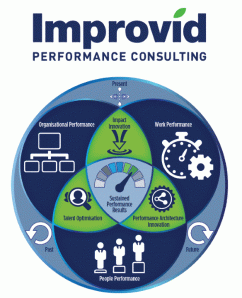For more information about Improvid Performance Consulting visit our Human Performance Improvement website.
Economists are preparing us for a challenging 2017 and the goal is simple: ‘Spend less and achieve more’ to prepare for 2020. While this might seem a difficult task, it’s undoubtedly possible for those managing performance at all levels to achieve – from the first-time supervisor to the executive.
Recently, I showcased 8 Performance Improvement Predictions for 2017. Today I want to take a closer look at my first prediction – People Focus – and show you how by addressing performance gaps in your organisation, you can maximise the return on your training and learning budget. After all, this year people will certainly become a major focus for management and they will begin to understand that traditional training and skills development doesn’t necessarily improve employee performance.
Be sure to include all performance levels
Ultimately people deliver performance and all levels contributing to performance should be aligned for the greatest possible business impact and sustainable performance results for 2020.
I recently compiled the graphic below, and I believe it perfectly depicts this alignment:

Level #1: Organisational performance
Performance – any performance – happens in a system and numerous factors (outside the employee) have an impact on performance delivery. One way to spend less but achieve more, is to tackle performance holistically. Simply put: Although people need skills, knowledge and the motivation to perform, other areas of the business will affect how they perform (i.e. organisational performance factors such as poor communication of management, lack of strategy understanding and an ineffective performance culture). In addition, with the ongoing war for talent, a blended workforce will free people to concentrate on critical business issues and innovation. These are just some of factors to consider when employee performance drops for no reason.
Level #2: Work performance
At a work performance level, just some factors that can positively impact performance include: Concise and simple job tasks, updated and relevant processes and procedures that are clearly defined and managed.
Level #3: People performance
This year, in preparation to pick the fruits of labour by 2020, organisations must embrace blended-learning that combines people, data and intelligent software –this is the challenge at a people performance level. This also refers to the digital system of delivering concise, relevant and up-to-the-minute learning chunks for employees – matching exactly what the job requires and tailoring the learning to it. Many organisations unknowingly train and develop staff without considering the actual gaps and reasons for poor performance. It’s been proven that more than 80% of undesirable performance is due to gaps in organisational and work performance systems. These should undoubtedly be aligned to start operationalising strategy.
6 Questions to ask to maximise your training budget
Start today: Spend less and achieve more! To start to address the gaps in your organisation’s performance and get a real return on your training budget – answer these six questions:
- Is your training and learning budget contributing to improved and sustainable performance?
- Do you have evidence and data to support this?
- Do you know why and for what you are training?
- Is your learning platforms and delivery systems in the digital era? Are you working towards this?
- Are gaps identified before training occurs (at work and organisational performance levels)?
- Do you have a holistic picture of where the shortcomings are?
If you would like to know more about what we do, please visit our website www.improvid.co.za or connect with Belia Nel on LinkedIn.

